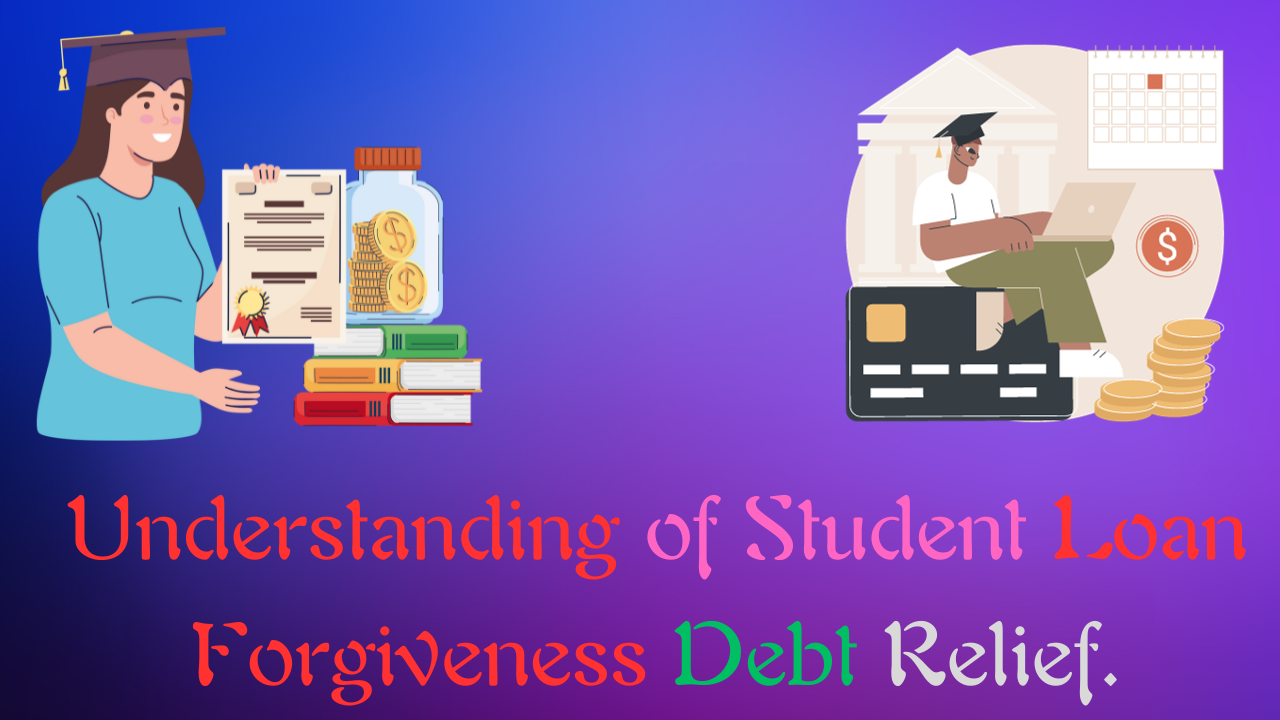Student Loan Forgiveness: Easing the Burden of Debt
In the ever-expanding world of higher education, many students find themselves grappling with the weight of student loan debt. Student loans can significantly impact one’s financial stability and future prospects. However, there is hope in the form of student loan forgiveness, a program designed to provide debt relief to those who meet certain criteria.
Understanding Student Loan Forgiveness
Student loan forgiveness is a government-backed program that allows eligible borrowers to have a portion or the entirety of their student loans forgiven. The purpose behind this initiative is to alleviate the financial burden on individuals who have invested in education but are struggling to repay their loans.
Types of Student Loan Forgiveness Programs
Public Service Loan Forgiveness (PSLF)
The Public Service Loan Forgiveness program is intended for individuals working in public service, such as government and non-profit organizations. After making 120 qualifying payments, borrowers can have their remaining student loan balance forgiven.
Teacher Loan Forgiveness
Teachers serving in low-income schools may be eligible for the Teacher Loan Forgiveness program. This program forgives a portion of their loans after five years of service.
Income-Driven Repayment Plans
Income-Driven Repayment Plans are designed to cap loan payments at a percentage of the borrower’s discretionary income. After 20 or 25 years of qualifying payments, any remaining balance can be forgiven.
State-Based Loan Forgiveness
Many states offer their own loan forgiveness programs to attract professionals to work in underserved areas, such as healthcare, education, or law enforcement.
Eligibility Criteria for Student Loan Forgiveness
To qualify for student loan forgiveness, you must meet specific criteria, which can vary depending on the type of forgiveness program. Generally, these programs require borrowers to make consistent payments, work in specific professions, and meet other criteria.
Application Process
The application process for student loan forgiveness can be intricate, involving paperwork, employer certification, and attention to deadlines. It’s essential to understand the requirements and deadlines associated with your chosen program.
Benefits and Drawbacks of Student Loan Forgiveness
Student loan forgiveness offers the obvious benefit of reducing or eliminating your debt. However, it’s crucial to consider potential drawbacks, such as tax implications and the long-term impact on your credit score.
Read More : Sustainable development project
Alternatives to Student Loan Forgiveness
If you don’t qualify for student loan forgiveness or wish to explore other options, you can consider alternatives like loan consolidation, refinancing, or extended repayment plans.
The Impact of Student Loan Forgiveness on Credit Score
One common concern for individuals considering student loan forgiveness is its impact on credit scores. While forgiveness itself doesn’t directly affect your credit, the process leading up to it can have consequences.
Preparing for Student Loan Forgiveness
To make the most of student loan forgiveness, it’s essential to stay informed, maintain accurate records, and consistently meet the requirements of your chosen program.
Conclusion
Student loan forgiveness can provide a lifeline for individuals facing overwhelming student debt. However, it’s crucial to understand the eligibility criteria, application process, and potential consequences before pursuing forgiveness. Make informed decisions to secure your financial future.
Frequently Asked Questions
- What is the Public Service Loan Forgiveness (PSLF) program?
- The PSLF program forgives the remaining student loan balance for individuals working in public service after making 120 qualifying payments.
- How can teachers qualify for loan forgiveness?
- Teachers in low-income schools can qualify for loan forgiveness under the Teacher Loan Forgiveness program after five years of service.
- What are income-driven repayment plans?
- Income-driven repayment plans cap loan payments at a percentage of the borrower’s discretionary income and offer forgiveness after 20 or 25 years of qualifying payments.
- Are there any tax implications of student loan forgiveness?
- Yes, forgiven loan amounts may be considered taxable income, so it’s important to be prepared for potential tax obligations.
- How can I expedite the loan forgiveness process?
- To expedite the process, ensure you meet all program requirements, maintain accurate records, and stay informed about program updates and changes.
